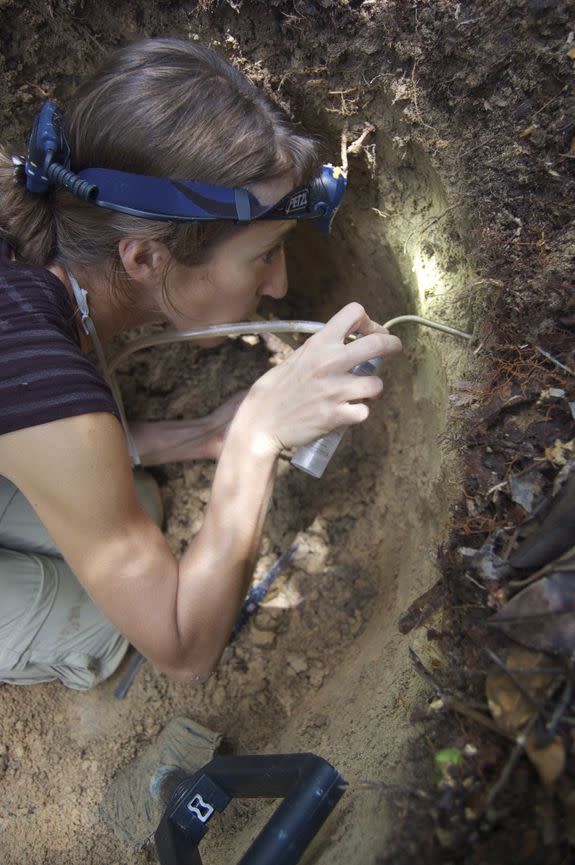Radiohead now has a fungus-farming ant named after it

A newly discovered ant species has a particularly moody name: Sericomyrmex radioheadi.
Scientists named the fungus-farming ant to honor both the music and climate change activism of British rock band Radiohead.
This particular species, found in Venezuela's slice of the Amazon rainforest, is a less-famous relative of the more popular leaf-cutter ant, they said in a study published Monday in the journal ZooKeys.
SEE ALSO: These hero ants perform dramatic, mind-boggling rescues of their wounded comrades
The Radiohead ant is at least the second creature this month to receive a rock-inspired name. A pistol shrimp with a bright pink snapping claw was recently christened Synalpheus pinkfloydi, after the progressive rock group Pink Floyd.
Sericomyrmex radioheadi belongs to a genus of "silky ants," which includes ants that have figured out how to farm their own food, Ana Ješovnik and Ted R. Schultz said in their study.

Image: Marko Rajkovi
Ješovnik and Schultz, both from the Smithsonian Institute's Ant Lab in Washington, D.C., said they discovered three new species of silky ants while collecting the critters in Central and South America. The also revised the Sericomyrmex genus based on DNA sequence data and their bodily features.
The duo named one of the ants after Radiohead "to honor their music," Ješovnik, the study's lead author, said in a news release.
"But more importantly, we wanted to acknowledge the conservation efforts of the band members, especially in raising climate change awareness," she said.
Radiohead frontman Thom Yorke has long been an outspoken advocate of efforts to slash global greenhouse gas emissions. In 2008, the band began organizing "carbon-neutral" world tours, and in 2015, Yorke signed an open letter urging world leaders to adopt the Paris Climate Agreement. He also has a penchant for retweeting Bill McKibben, a prominent environmental activist.

Image: Kevin Winter/Getty Images for Coachella
As for the ants, the scientists found their bodies are covered with a white, crystal-like layer — a feature that was previously unknown until the team used a scanning electron microscope.
This crystalline layer only appears on female ants, including workers and queens, but is entirely absent in males. Ješovnik and Schultz said it's still not clear what function this layer plays, though they're looking to see if it helps the ants fight diseases and parasites in their fungus gardens.
In their study, the authors acknowledged that some of the ant species they describe might actually be multiple species that look alike. But because the ants are in the early stages of their species' evolution, this is hard to detect, they said.
